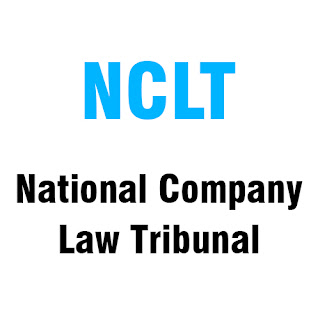Constitution of NCLT and NCLAT in India: A New era of Company Law Litigation
The NCLT and NCLAT was constituted by the Ministry of Corporate Affairs on 16the June, 2016 in exercise of powers conferred under section 408 and 410 of Companies Act, 2013. In recent times the Indian government is focusing on ease of business carried out in India. In view of it various legal reforms have also been developed and the constitution of NCLT and NCLAT is the one more step into this direction.
NCLT initially had 11 benches including two benches in the national capital, New Delhi. The Retired Supreme court judge became the first chairperson of NCLAT and Retired High court judge became the first president of NCLT.
IMPACT OF THE CONSTITUTION OF NCLT AND NCLAT ON COMPANY LAW LITIGATION
The constitution of the NCLT is likely to have an abecedarian impact as far as company law action is concerned. Some of the more important consequences of this development are enumerated below
Single Window The most significant benefit likely to arise from the constitution of the NCLT and the NCLAT is that the bars will, effectively, act as a single window for agreement of all company law related controversies. The recently constituted bars will replace the being Company Law Board ('CLB'), the Board of Industrial and Financial Reconstruction ('BIFR') and its appellate authority. Therefore, the gratuitous fragmentation and multifariousness of the proceedings before colorful courts and bars in the same matter will be now be checked.
The constitution of the NCLT is in consonance with the lately legislated Insolvency and Bankruptcy code and the liquidation process of companies and commercial debtors will now be vastly simplified.
Further, in the former governance most powers were reserved either for the Central Government, the CLB or the High Courts. Still, with the confirmation of the NCLT, the intent is to consolidate these powers and governance and assign them to a single authority, thereby simplifying the disagreement adjudication process as far as companies are concerned.
Class Action Claims Shareholders are allowed to file class action suits before the NCLT, against the company for the breach of vittles of the Companies Act. Per this provision, if 100 or further shareholders or depositors find that the company's affairs aren't being managed in its stylish interests, they may approach the NCLT. In a class action suit, shareholders can inclusively sue directors or adjudicators of the company for their misconduct or unwarranted acts. This remedy will be pivotal for the nonage shareholders who seek redressal against arbitrary/ rough opinions of their operation. In addition, with the increase of shareholder activism in India similar a remedy would be a precious remedy in the hands of shareholders against their boards.
Greater Field Impact Under the old law, the CLB was operating through only 5 benches. Still, the NCLT will commence with 11 benches, with the Star Bench being in New Delhi. This will really prop in icing a wider reach for adjudging company law matters in India.
Speedy Disposal of Cases The NCLT has been given the powers to regulate its own procedure which will help them in disposing matters in a simplified manner. Further, the NCLT and the NCLAT are under a accreditation to dispose of cases before them as expeditiously as possible. In this environment, a time limit of 3 months has been handed to dispose of cases, with an extension of 90 days for sufficient reasons to be recorded by the President or the Speaker, as the case perhaps. This time limit is anticipated to insure the speedy disposal of cases by the NCLT and the NCLAT.
Limitations and Unanswered Questions The announcement doesn't expressly specify the manner or procedure for transferring pending cases from the CLB and High Courts to the NCLT. It's likely the process of transfer will be commenced and enforced as a gradational process. The ideal may be to transfer the matters to the new body in a gradual manner, so as to give the NCLT ample time to structure itself in the company law action of the country. Still, an effective way will need to be taken to help gratuitous confusion amongst petitioners.
In addition, vittles relating to the winding up of the companies and those under Chapter XV of the Companies Act haven't yet been notified. Thus, these matters will continue to be governed by the vittles of Companies Act 1956. There's no updated information available in terms of when the provisions of Chapter XV are likely to be brought into force.
The NCLAT will act as the appellate forum and all prayers from the orders of the NCLT will be heard by it. Prayers from the NCLAT will be heard by the Supreme Court of India.
Conclusion
The constitution of the NCLT as a single forum to deal with Company Law matters is a welcome move to colorful stakeholders as it's aimed at furnishing a speedy and effective disposal of the matters. In addition, it'll also help in taking the cargo off the overburdened High Courts. Still, it's relatively important that the transition period of converting the CLB to the NCLT, particularly in terms of transfer of being matters, must be precisely handled by the applicable authorities, as the same will determine its effectiveness in due course.
Read More :

.jpg)


Comments
Post a Comment